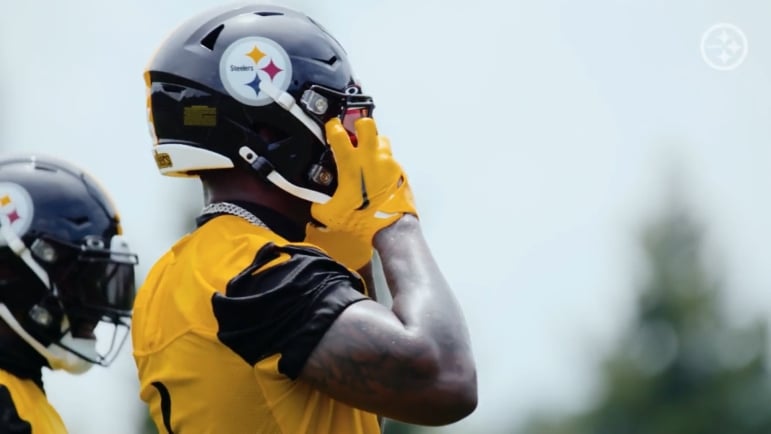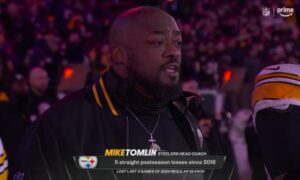Player: ILB Patrick Queen
Stock Value: Up
Reasoning: Since signing with the Steelers, Patrick Queen has only ingratiated himself to the city. Despite playing four years for the Baltimore Ravens, he is embracing the other side of the rivalry. More importantly, he has already become a leader of the defense and is taking on key responsibilities. He should step up as a considerable force in the locker room and on the field, for years to come.
The Pittsburgh Steelers barely paid top-five money for a 24-year-old All-Pro at his position in inside linebacker Patrick Queen. This offseason, they signed him to a three-year, $41 million deal, making him the fifth-highest-paid player at his position. At $13.67 million per season, he falls well short of Roquan Smith ($20), Fred Warner ($19.05), or Tremaine Edmunds ($18).
That’s a bargain, at least in theory, assuming everything works out. Queen faces his share of skeptics, questioning if he can thrive without Smith by his side. He spent the past season and a half playing with him with the Ravens, during which time most acknowledge he took his game to another level.
But Queen was also barely 23 years old when the Ravens acquired Smith, having played only two-plus seasons. He was already displaying obvious signs of growth that year before they landed Smith, as many point out.
And he is continuing to grow as he transitions into an entirely new defense. Now the leader for the Steelers, Queen has impressed onlooking reporters with his dynamic athleticism. Unlike previous swings and misses, he has already proven that he can play at a high level in the NFL. He should bring things to this team that they haven’t had since Ryan Shazier’s injury, a standard he acknowledges.
Having struggled with the role earlier in his career when he was younger, Patrick Queen is also taking up the “green dot”. The player who wears the helmet with a speaker inside connected to the sideline wears that dot on his helmet. That is an important task for communication, and the Steelers are comfortable with what he has shown in that capacity.
As the season progresses, Steelers players’ stocks rise and fall. The nature of the evaluation differs with the time of year, with in-season considerations being more often short-term. Considerations in the offseason often have broader implications, particularly when players lose their jobs, or the team signs someone. This time of year is full of transactions, whether minor or major.
A bad game, a new contract, an injury, a promotion—any number of things affect a player’s value. Think of it as a stock on the market, based on speculation. You’ll feel better about a player after a good game, or worse after a bad one. Some stock updates are minor, while others are likely to be quite drastic, so bear in mind the degree. I’ll do my best to explain the nature of that in the reasoning section of each column.








